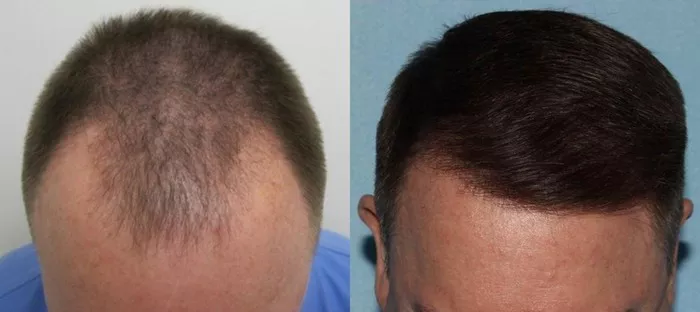The journey towards a fuller head of hair through a hair transplant is a transformative experience, but many individuals are left wondering about the lingering effects, particularly the duration of scalp numbness post-procedure. In this guide, we explore the intricacies of this common concern, providing in-depth insights into how long the scalp remains numb after a hair transplant and what individuals can expect during the recovery period.
1. Immediate Post-Transplant Period: The Onset of Scalp Numbness
The first phase of post-transplant recovery often includes the onset of scalp numbness, a temporary side effect of the surgical process. Understanding the timeline of when this sensation typically begins sets the foundation for managing expectations.
a. Immediate Post-Surgery Impact: Scalp numbness is a common occurrence immediately after a hair transplant. This sensation is a result of the local anesthesia used during the procedure and typically starts to set in as the effects of anesthesia begin to wear off.
b. Duration of Initial Numbness: The immediate numbness experienced in the first few hours post-transplant is generally short-lived. Patients can expect this initial numbness to start subsiding within the first 24 to 48 hours, as the anesthesia gradually wears off.
c. Mild Discomfort: During this initial phase, individuals may also experience mild discomfort or a sensation of tightness on the scalp, which is a normal part of the healing process.
2. Early Recovery Period: Managing Temporary Numbness
As patients progress through the early stages of recovery, understanding how to manage and cope with the lingering numbness becomes crucial. This phase often involves a gradual reduction in scalp numbness.
a. Week 1 to Week 2: In the first week to two weeks post-transplant, patients may still experience residual numbness. However, this sensation tends to diminish significantly during this period, allowing individuals to resume their daily activities with increasing comfort.
b. Gentle Massage Techniques: Engaging in gentle massage techniques, as advised by the transplant surgeon, can help stimulate blood circulation in the scalp, aiding in the reduction of numbness. It’s essential to follow professional guidance to avoid any potential harm to the newly transplanted grafts.
c. Normalizing Sensation: As the scalp heals, the nerves gradually recover, leading to a normalization of sensation. Patients are encouraged to remain patient during this process, understanding that the duration of numbness varies from person to person.
3. Mid-Term Recovery: Continued Improvement
The mid-term recovery phase marks a significant reduction in scalp numbness, with most individuals experiencing a return to normal sensation. This period is pivotal for individuals eager to resume their regular activities without any lingering discomfort.
a. Weeks 3 to 6: By the third to sixth week post-transplant, the majority of patients report a significant decrease in scalp numbness. Normal activities, including washing the hair gently, can usually be resumed during this period.
b. Nerve Regeneration: The body’s natural healing processes contribute to nerve regeneration, further alleviating any remaining numbness. Continued adherence to post-operative care instructions is crucial to support this regeneration.
c. Monitoring Progress: Regular check-ins with the transplant surgeon during mid-term recovery appointments allow for the monitoring of progress and addressing any concerns related to scalp sensation.
See Also: How Long Until Hair Transplant Grafts Secure: A Full Guide
4. Long-Term Recovery: Residual Numbness and Individual Variations
While most individuals experience a substantial reduction in scalp numbness during the mid-term recovery phase, some residual numbness may persist. Understanding the factors influencing these individual variations is essential for managing expectations.
a. Up to 3 Months: For some individuals, minimal residual numbness may persist up to three months post-transplant. This is considered a normal part of the healing process and is often a result of the nerves fully regenerating.
b. Patient Variations: Each patient’s experience with scalp numbness is unique, influenced by factors such as their overall health, response to anesthesia, and the specific details of the transplant procedure.
c. Post-Operative Care Importance: Adhering to post-operative care instructions, including any prescribed medications and recommended activities, remains crucial during the long-term recovery phase to support complete nerve recovery.
In conclusion
Understanding the timeline of scalp numbness after a hair transplant is essential for individuals embarking on this transformative journey. From the immediate post-surgery period to the long-term recovery phase, managing expectations and following professional guidance contribute to a smoother healing process. As with any medical procedure, individual experiences may vary, but by being informed and patient, individuals can navigate the duration of scalp numbness with confidence, ultimately enjoying the benefits of their hair transplant.


